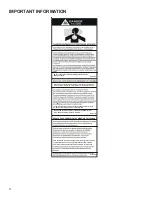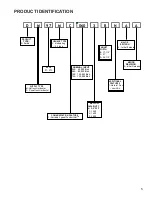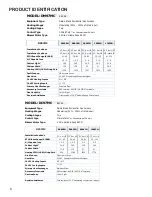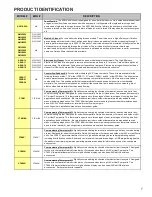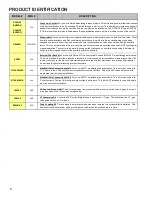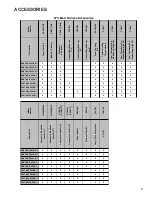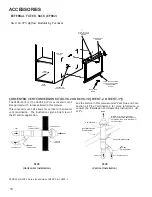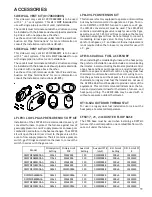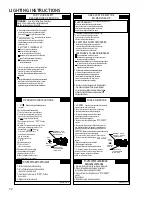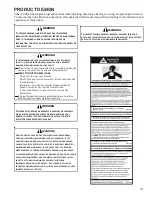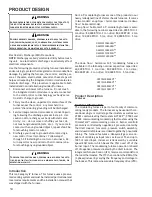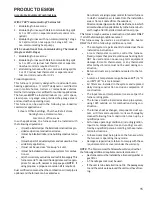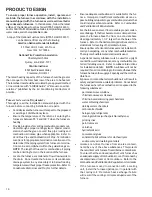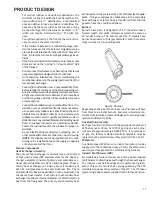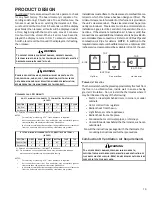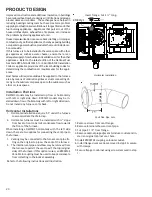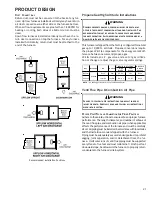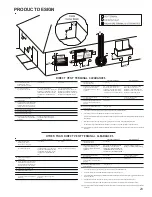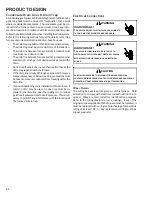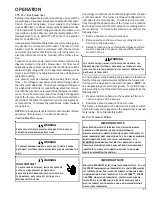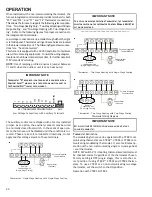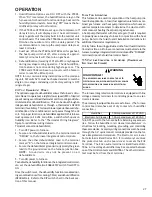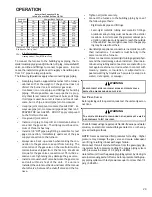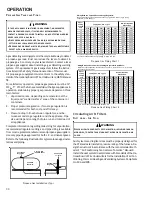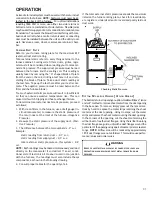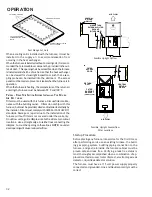
17
For vertical (upflow or downflow) applications, the
minimum cooling coil width shall not be less than fur-
nace width minus 1”. Additionally, a coil installed
above an upflow furnace or under a counterflow fur-
nace may be the same width as the furnace or may
be one size larger than the furnace.
Example: a “C”
width coil may be installed with a “B” width fur-
nace.
For upflow applications, the front of the coil and fur-
nace must face the same direction.
•
If the furnace is installed in a residential garage, posi-
tion the furnace so that the burners and ignition source
are located not less than 18 inches (457 mm) above the
floor. Protect the furnace from physical damage by ve-
hicles.
•
If the furnace is installed horizontally, ensure the access
doors are not on the “up/top” or “down/bottom” side
of the furnace.
•
Do not connect this furnace to a chimney flue that serves
a separate appliance designed to burn solid fuel.
•
On Counterflow Installations, the air conditioning coil
must be downstream on the supply (positive) side of the
furnace heat exchanger.
•
Counterflow Installation over a noncombustible floor.
Before setting the furnace over the plenum opening, en-
sure the surface around the opening is smooth and level.
A tight seal should be made between the furnace base
and floor by using a silicone rubber caulking compound
or cement grout.
•
Counterflow Installation over a combustible floor.
If in-
stallation over a combustible floor becomes necessary,
use an accessory subbase (see Specification Sheet ap-
plicable for your model for details.) A special accessory
subbase must be used for upright counterflow unit in-
stallations over any combustible material including wood.
Refer to subbase instructions for installation details.
Follow the instructions with the subbase for proper in-
stallation.
Do not install the furnace directly on carpeting, tile, or
other combustible material other than wood flooring.
(
NOTE
: The subbase will not be required if an air condi-
tioning coil is installed between the supply air opening
on the furnace and the floor.)
Furnace Components
Heat Exchanger Assembly
The primary heat exchanger is a tubular type constructed
of high quality steel (409 stainless steel for the heat ex-
changer assembly consists of primary and secondary sec-
tions crimped together on a back transition plate. The sec-
ondary heat exchanger is a single pass coil consisting of
AL29-4C stainless steel tubes and aluminum fins. These
stainless steel tubes are expanded on to the aluminum fins
to enhance heat transfer. Each tube in the secondary heat
exchanger contains an internal turbulator to effectively scrub
heat from the flue gases. The primary and secondary heat
exchanger sections are joined by a 441 stainless steel header
plate. Flue gas condensation takes place in the secondary
heat exchanger as latent heat is transferred from the flue
gases to heat the conditioned space.
Burners
Burners have been redesigned for 34.5" chassis furnaces.
Overall length and width dimensions remain the same as
40" model burners. The burners used 34.5" models have
burner head insert with larger diameter center hole and a
larger number of surrounding holes.
New 34.5 Burner
Depending on the size of the furnace, each furnace will have
from three to six inshot burners. Burners are precisely con-
structed of aluminized steel and designed to provide proper
ignition and flame stability.
Gas Manifold Assembly
Each gas manifold is fitted with the appropriate number of
#45 natural gas orifices. At 100% of gas input, each burner
will provide approximately 20,000 BTUH. If converting to
LP gas, the factory installed manifold assembly must be
replaced by the manifold assembly provided in the LP kit.
ECM Motor
A variable speed ECM four wire indoor fan motor provides
supply air to the conditioned space. This is the same motor
used on previous generation communicating furnaces.
Induced Draft Blower (IDB)
All modulating furnace models use a three phase induced
draft blower to draw flue gases through the heat exchanger.
The inducer uses ball bearings and is permanently lubri-
cated. This motor is driven at varying speeds by the VFD
(variable frequency drive) section of the IFC. The IFC takes
typical single phase power supplied to the furnace and con-
PRODUCT DESIGN


